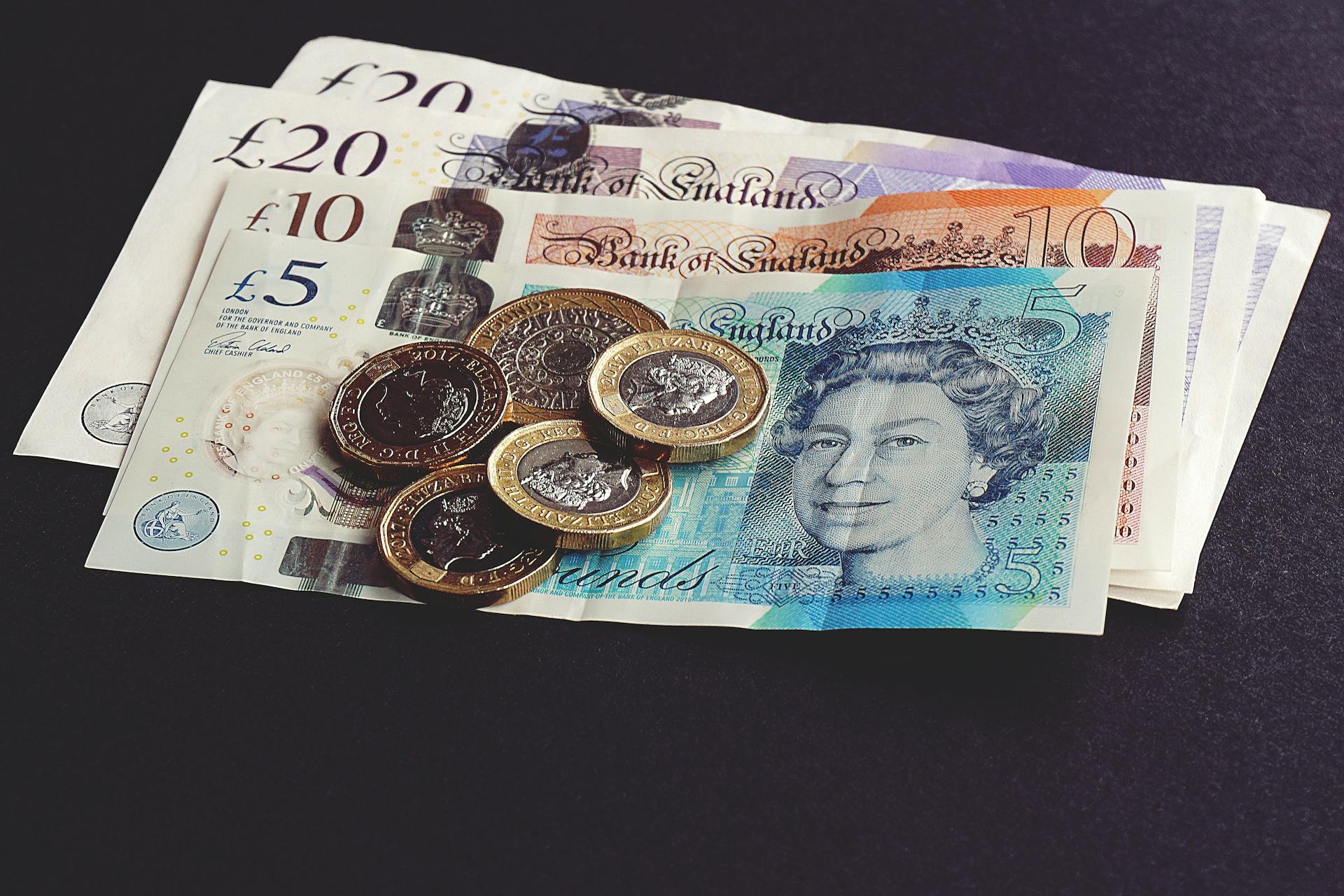
M-Pesa is a mobile money service that allows users to store, send, and receive money using their mobile phones. It was first launched in Kenya in 2007.
M-Pesa is a product of Safaricom, a leading telecommunications company in Kenya. The service has since expanded to other countries in Africa and Asia.
The idea behind M-Pesa was to provide a convenient and accessible way for people to manage their finances, especially those who do not have access to traditional banking services. This was particularly important in Kenya, where many people rely on cash-based transactions.
M-Pesa has become an essential part of daily life in Kenya, with millions of users relying on it for various financial transactions.
For another approach, see: M Pesa International Money Transfer
History of M-Pesa
M-Pesa was launched in Kenya in 2007 to make domestic remittance as simple as sending a text.
It was a groundbreaking moment in mobile money history. M-Pesa has since expanded to seven African markets.
The service allows customers to instantly and securely send funds, pay bills, make in-store payments, and access financial services.
M-Pesa customers can also send money abroad and access financial services such as loans and overdraft facilities.
A different take: Pc Credit Cards
M-Pesa Concept and Services
M-Pesa was initially designed to enable microfinance borrowers to receive and repay loans using Safaricom's airtime resellers, but it quickly evolved to offer a range of services.
M-Pesa operates in several countries, including Kenya, Tanzania, and Ghana, and is a joint venture between Safaricom and Vodacom. The service allows users to deposit and withdraw local currency, transfer money to other users, and pay bills.
Users can access M-Pesa through a network of agents, including airtime resellers and retail outlets, and the service provides a virtual account called Mshwari, which allows users to save money. M-Pesa also offers partnerships with Kenyan banks, providing expanded banking services like interest-bearing accounts and loans.
Here are some of the key services available on M-Pesa:
- Deposit and withdraw local currency
- Transfer currencies to other users
- Pay bills
- Purchase airtime
- Save currency in a virtual account (Mshwari)
- Transfer currencies between M-Pesa and a bank account
- Borrow money to complete a transaction (Fuliza)
Concept
The concept of M-PESA was initially designed to make it easy for microfinance borrowers to receive and repay loans using Safaricom airtime resellers. This innovative approach aimed to reduce costs for microfinance institutions, allowing them to offer more competitive loan rates to their users.
The service was piloted, but customers quickly adopted it for various alternative uses, causing complications with Faulu, the partnering microfinance institution. This led to a re-focusing of M-PESA's value proposition to sending remittances home across the country and making payments.
M-PESA's creators recognized the potential for mobile banking to transform the way people access financial services. They sought to create a service that would bridge the gap for underbanked or unbanked individuals.
M-PESA's initial objective was to achieve a target of 200,000-300,000 users in Kenya and attain a monthly target income of at least KES 40,000. This translates to approximately 2,667 transactions monthly or 90 transactions daily.
Here are the key objectives of M-PESA:
- To achieve a target of 200,000-300,000 users in Kenya.
- To attain monthly target income of a minimum of KES 40,000.
These objectives demonstrate the clarity of vision and goals that M-PESA's creators had from the outset.
Regulation and KYC
M-PESA took a proactive approach to regulation by engaging with Kenyan regulators and keeping them updated on their development process. They also reached out to international regulators like the UK's Financial Conduct Authority (FCA) and the payment card industry to understand internationally recognized best practices.
M-PESA leveraged national identity cards issued by the Kenyan government to satisfy their Know Your Customer (KYC) requirements.
To obtain a license, M-PESA had to address concerns from regulators about non-branch banking potentially adding to financial instability.
If this caught your attention, see: Ally Financial Pay with Credit Card
Understanding Mobile Payments

M-Pesa is a mobile banking service that allows users to store and transfer money through their mobile phones. It's a joint venture of Safaricom and Vodacom, serving countries like Kenya, Tanzania, and the Democratic Republic of Congo.
M-Pesa operates through a network of agents, including airtime resellers and retail outlets, which can deposit and withdraw local currency. Users can also transfer currencies to other users and pay bills.
One of the unique features of M-Pesa is its user interface technology, which differs between Safaricom of Kenya and Vodacom of Tanzania. While Safaricom uses SIM toolkit (STK) to provide handset menus for accessing the service, Vodacom relies mostly on USSD.
M-Pesa provides various services, including deposit and withdrawal of local currency, transfer of currencies to other users, payment of bills, purchase of airtime, and saving currency in a virtual account. It also offers borrowing money to complete a transaction when short on cash.
For another approach, see: Paypal Currency Exchange Rate Calculator
Here are some of the services available on M-Pesa:
- Deposit and withdraw local currency
- Transfer currencies to other users
- Paying bills
- Purchasing airtime
- Saving currency in a virtual account (Mshwari)
- Transferring currencies between the service and a bank account
- Borrowing money to complete a transaction (Fuliza)
M-Pesa also offers partnerships with Kenyan banks, providing expanded banking services like interest-bearing accounts, loans, and insurance. The service enables users to manage and pay utility bills and taxes, making it easy for organizations to send money to individuals or in bulk in real time.
M-Pesa provides receipts as proof of transaction, and all transactions require a PIN. Both parties receive an SMS notification with the full name of the counterparty and the amount of funds deposited or withdrawn from the user's account.
M-Pesa in Kenya and Africa
M-Pesa in Kenya and Africa is a remarkable story of innovation and growth. M-PESA was first launched in Kenya in March 2007 by Safaricom, a mobile network operator, and quickly captured a significant market share for cash transfers.
By December 2011, M-PESA had grown to 17 million subscribers in Kenya alone, forcing formal banking institutions to take notice. The service's growth was so rapid that banks lobbied the Kenyan finance minister to audit M-PESA in 2008, but the audit found the service to be robust.
M-PESA transactions for 2014 were valued at KSh2.1 trillion, a 28% increase from 2013, and almost half the value of Kenya's GDP. This demonstrates the significant impact M-PESA has had on the Kenyan economy.
Vodacom and Safaricom Partnership
Vodacom and Safaricom Partner to Boost M-PESA Growth.
In early 2020, Vodacom and Safaricom completed the acquisition of the M-PESA brand from Vodafone Group through a newly created joint venture.
This joint venture gives both Vodacom and Safaricom full control of the M-PESA brand, product development, and support services.
The partnership will accelerate the growth of M-PESA through Africa.
Both companies now have the opportunity to expand M-PESA into new African markets.
This move is expected to boost the growth of M-PESA significantly.
The joint venture will enable Vodacom and Safaricom to make strategic decisions about the brand and its development.
The partnership will also allow for more efficient use of resources and expertise, which will further drive growth.
This is a significant step forward for M-PESA and its users in Africa.
A fresh viewpoint: Send Money to Africa Mobile Money
Kenya
Kenya was the first country to experience the impact of M-PESA, launched by Safaricom in March 2007.
By December 2011, M-PESA had grown to 17 million subscribers in Kenya alone, capturing a significant market share for cash transfers.
In 2008, a group of banks lobbied the Kenyan finance minister to audit M-PESA, but the audit found the service to be robust.
M-PESA transactions for 2014 were valued at KSh2.1 trillion, a 28% increase from 2013, and almost half the value of the country's GDP.
Safaricom launched a companion Android app, Safaricom M-Ledger, on 19 November 2014, which gives M-PESA users a historical view of all their transactions.
Many other companies, such as M-kopa and Sportpesa, rely on the M-PESA system in Kenya.
The Google Play store started taking payments for apps via Kenya's M-PESA service in February 2018.
Safaricom's 40% minority shareholder, Vodafone, played a significant role in the establishment of M-PESA in Kenya.
The Kenyan government, which owns 35% of Safaricom, provided significant support to M-PESA, including regulatory approval and deposit insurance.
Tanzania
M-PESA was launched in Tanzania by Vodacom in 2008 but its initial ability to attract customers fell short of expectations.
The International Finance Corporation released a report in 2010 that analyzed the strategic changes Vodacom implemented to improve their market position.
As of May 2013, M-PESA in Tanzania had five million subscribers.
South Africa
South Africa was supposed to be a major market for M-PESA, with Vodacom projecting 10 million users in the first three years. However, by May 2011, it had only registered approximately 100,000 customers.
A tough regulatory environment and lack of education about the product hindered M-PESA's growth in South Africa. The local regulations were more stringent than in other African countries.
Vodacom and Nedbank launched a campaign to re-position M-PESA in June 2011, targeting customers with a higher Living Standard Measures (LSM) than initially targeted. This effort was an attempt to boost M-PESA's customer base.
Despite these efforts, South Africa still lags behind Tanzania and Kenya in terms of M-PESA subscribers, with only about 1 million subscribers as of March 2015. This is not surprising, given that 70% of South Africans are already "banked", meaning they have at least one bank account with an established financial institution.
India
India was one of the countries where M-PESA was launched, in a close partnership with ICICI bank in November 2011. Development for the bank began as early as 2008.

Vodafone India partnered with ICICI and ICICI bank, and ICICI launched M-Pesa on 18 April 2013. The service was planned to be rolled out throughout India.
Registration for M-PESA was free, but charges were levied per M-PESA transaction for money transfer services.
DTH and Prepaid recharges could be done through M-PESA for free.
M-PESA was shut down from 15 July 2019 due to regulatory curbs and stress in the sector. Vodafone surrendered their PPI licence on 1 October 2019.
For your interest: Amazon Pay India Gets Rs 600 Crore Fresh Capital Investment
Frequently Asked Questions
How to send money to M-Pesa from USA?
To send money to M-Pesa from the USA, select Kenya as your destination country and M-Pesa as your mobile wallet destination. You'll then need to enter the beneficiary's information and complete the transaction with a payment PIN or verification code.
Can foreigners use M-Pesa in Kenya?
Foreigners can use M-Pesa in Kenya, but they need to register their valid foreign passport, military ID, or Foreigner Certificate at a Safaricom shop or Care Desk first. Registration is required to receive a confirmation message and numeric start key PIN to activate M-Pesa on their phone.
How does M-PESA work?
M-PESA allows customers to deposit cash through agents and transfer funds electronically, and vice versa, making it a convenient mobile payment service. This process enables users to easily manage their finances and make transactions using their mobile phones.
Is it safe to use M-PESA?
Yes, M-PESA has robust security measures in place to protect your funds. Your money is safe with us
How many countries are using M-PESA?
M-PESA is available in 8 countries, including Kenya, Ghana, and Tanzania. Its widespread presence across Africa makes it a leading mobile money service on the continent.
Sources
- https://en.wikipedia.org/wiki/M-Pesa
- https://www.forbes.com/sites/danielrunde/2015/08/12/m-pesa-and-the-rise-of-the-global-mobile-money-market/
- https://centreforpublicimpact.org/public-impact-fundamentals/mobile-currency-in-kenya-the-m-pesa/
- https://www.vodafone.com/about-vodafone/what-we-do/m-pesa
- https://www.investopedia.com/terms/m/mpesa.asp
Featured Images: pexels.com


